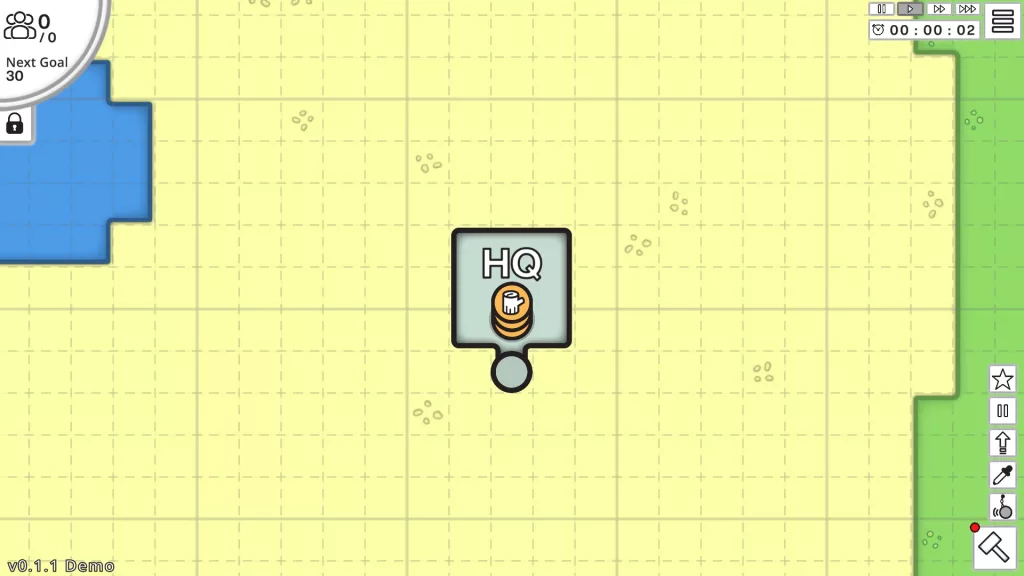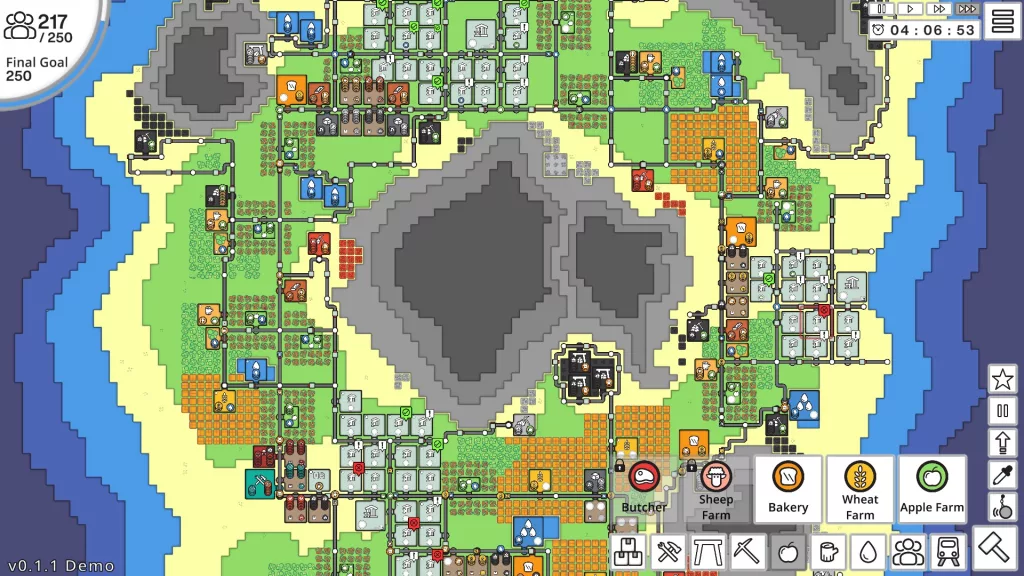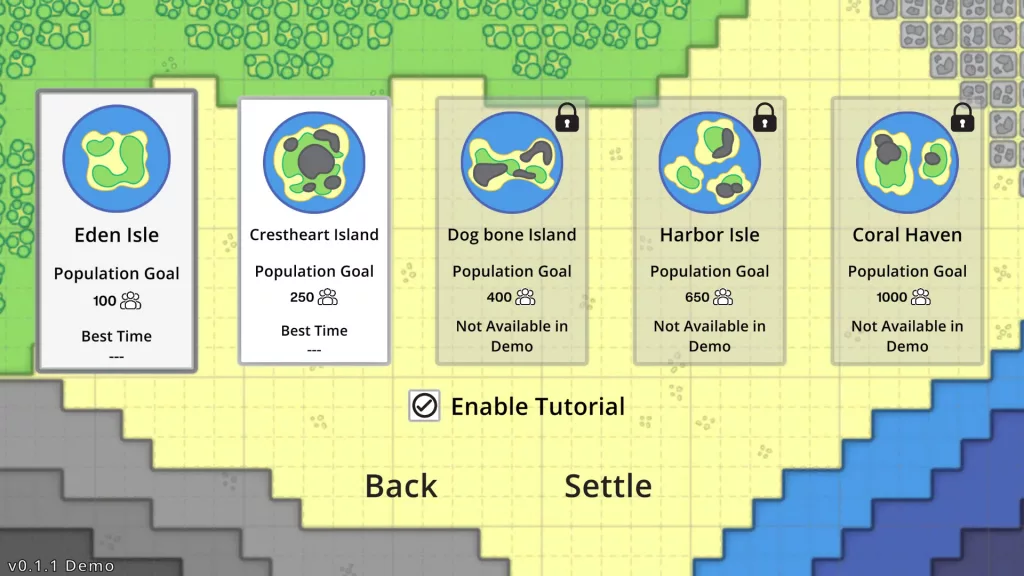I did a bad thing. I stifled my attempt to play my entire Steam library by adding a new game. But I couldn’t resist playing this free demo for what looks like will be an extremely fun game when it gets released. Simple to play, but hard to win.
Mini Settlers hasn’t had a full release on Steam yet, so many quality-of-life features aren’t implemented yet. You can’t load and save, nor are there any achievements, to give two examples. What we do get are two demo levels that show off how the game works.
At it’s core, it is a very simple strategy game. You gather resources to supply other buildings, which then generate more resources. You start out with a HQ that generates wood. You use the wood to build water wells and generate water. You use the water to plant an apple farm and generate apples. You use the apples to supply woodcutters and generate more wood. And so on.

The actual goal of the game is a little more complex, however. You have to build houses that both generate a population and increase the maximum population. To complete each level you need to reach a certain population. In order to keep your population growing, you need to keep a steady supply of food and water to each house. If you fail to supply a house, your population decreases instead.
This means that you have to be careful about how you build the roads connecting each structure. If you don’t plan carefully, you risk creating choke points in your network and start to lose resources. The game ultimately is about controlling the flow of resources, and ensuring that you can expand while still supplying your existing houses.

As your population grows you will unlock new buildings that allow you to produce new resources, upgrade your cities and houses, and make old resources renewable. One thing I learned the hard way is that renewable resources are key. If you upgrade your houses to rely on finite resources you will eventually run out and your population will be decimated.
It’s a fun little game that seems simple and easy to understand, yet leads to some complex puzzle solving. The demo version only has two levels and about half of the buildings, but you can already see the potential within the game.

There are a few quirks with the UI: roads can be hard to draw in a straight line, often bending when you don’t want; and the tutorial doesn’t show a close button right away. But this doesn’t detract from the overall experience too much, and given that it’s still a demo there’s still time to tweak these things.
I think this is a fun little game. I’ll almost certainly pick up the full game when it gets released.



